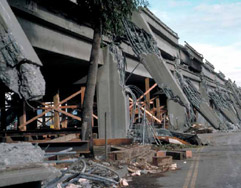Civic outreach plans are critical components of success for large public projects. In spite of data that proves it, public officials often neglect to develop or implement these types of plans. And, experienced contractors often fail to insist on them.
Why is that? Could it be because there has been too little attention on why large projects sometimes languish or fail? Almost every project that encounters problems lacks a good civic outreach plan. One might almost think a civic outreach plan should be required because it forces attention on all the tough questions that must be answered.
There are many reasons why civic outreach plans are important, but consider just two:
• Media outlets provide news 24 hours of every day, and reporters scramble to find enough news to keep the public interested. They know, however, that local political news can be golden, especially if there is any controversy whatsoever. That type of media coverage will absolutely capture the attention of the local community; and,
• Political causes are now quite sophisticated, even at the local levels of government. People interested in any issue know how to manipulate public perception. If stakeholders don’t understand why or how something is being done, they can become disenchanted. Then, with a little effort, it is possible to sabotage public perception.
Public officials must not just offer transparency. It is now necessary for them to communicate well and justify their actions. A business case must be outlined so that taxpayers, stakeholders, and citizens understand the logic behind any and all types of large initiatives. Not only is it important to educate the community, but also it is necessary to message to internal stakeholders. All parties deserve, and will demand, to be informed. This is not an easy task or one that will evolve well without a well-developed plan. Communication and civic outreach can make or break even the best projects.
The planning process should start as soon as a decision has been made to proceed on any large initiative. If the project is a common one with a time-tested delivery method, the outreach plan may be short and simple. However, if the project is complex, involves raising funds, uses alternative revenue sources, or is designed to use a not-so-common delivery method, the plan will be more complex.
Civic outreach plans may be called by many names but basically they are implemented to ensure transparency, explain the rationale behind the project, generate public support, and build confidence in the leaders who will champion the project. Usually the first decision is to determine whether the communication outreach will be implemented and overseen internally or externally. That decision should be based on internal resources, community culture, and whether or not the project is expected to have political implications.
Communication plans must contain basic messages about every aspect of the project. Before initiating projects, organizers should designate spokespersons and set a timeline for launching the plan. Possibly the most complex task is to decide how and when to convey information to diverse groups as well as the media. No matter who implements and oversees the plan once it is developed, the planning process should include a team of people who are well versed in the need for the project, understand the questions that will be asked, and are familiar with the community at large.
When all the anticipated questions are listed and the impacted parties are identified, an outreach plan may be shaped accordingly. But, this process often plays another critical role. Officials who will be leading the project are alerted and reminded again of the importance of total transparency and the importance of explaining what they are about to do. They are forced to consider tough questions that may be asked. If there are issues difficult to explain, they are the ones to help develop the messages. Often, those closest to the project and the problem they are attempting to solve understand everything too well – and they assume others also understand. That is rarely the case.
Elected officials are very busy individuals and they are capable of forgetting that citizens may not always agree with what is happening, especially if they don’t understand. Public officials charged with launching large projects may not feel that it is their responsibility to inform the citizenry of what they are about to do. Contractors attempting to partner with governmental entities are sometimes so eager to capture the opportunities they simply forget the importance of good community outreach and information. When that happens, the result is usually poor.
Civic outreach plans are critically important, and they should never be overlooked.
Mary Scott Nabers is president and CEO of Strategic Partnerships Inc., a business development company specializing in government contracting and procurement consulting throughout the U.S. Her recently released book, Inside the Infrastructure Revolution: A Roadmap for Building America, is a handbook for contractors, investors and the public at large seeking to explore how public-private partnerships or joint ventures can help finance their infrastructure projects.






 RSS Feed
RSS Feed